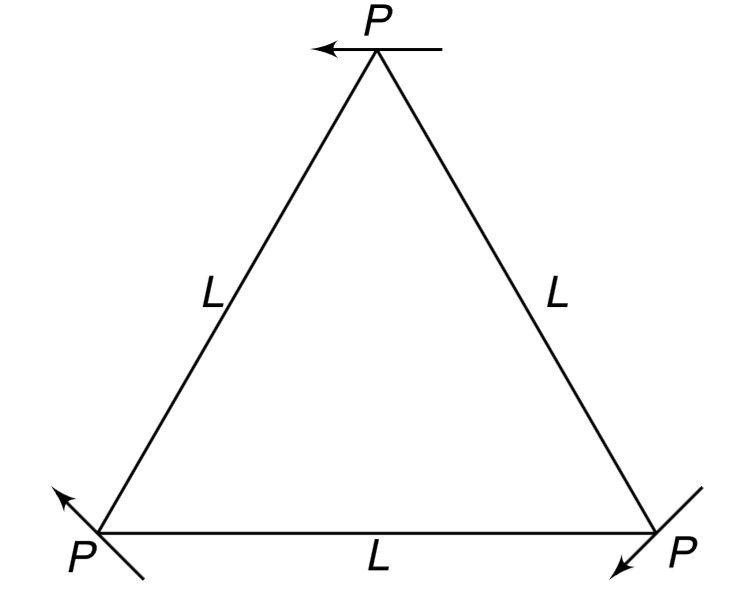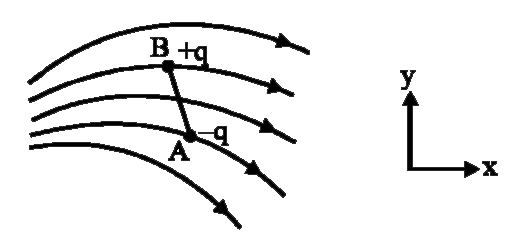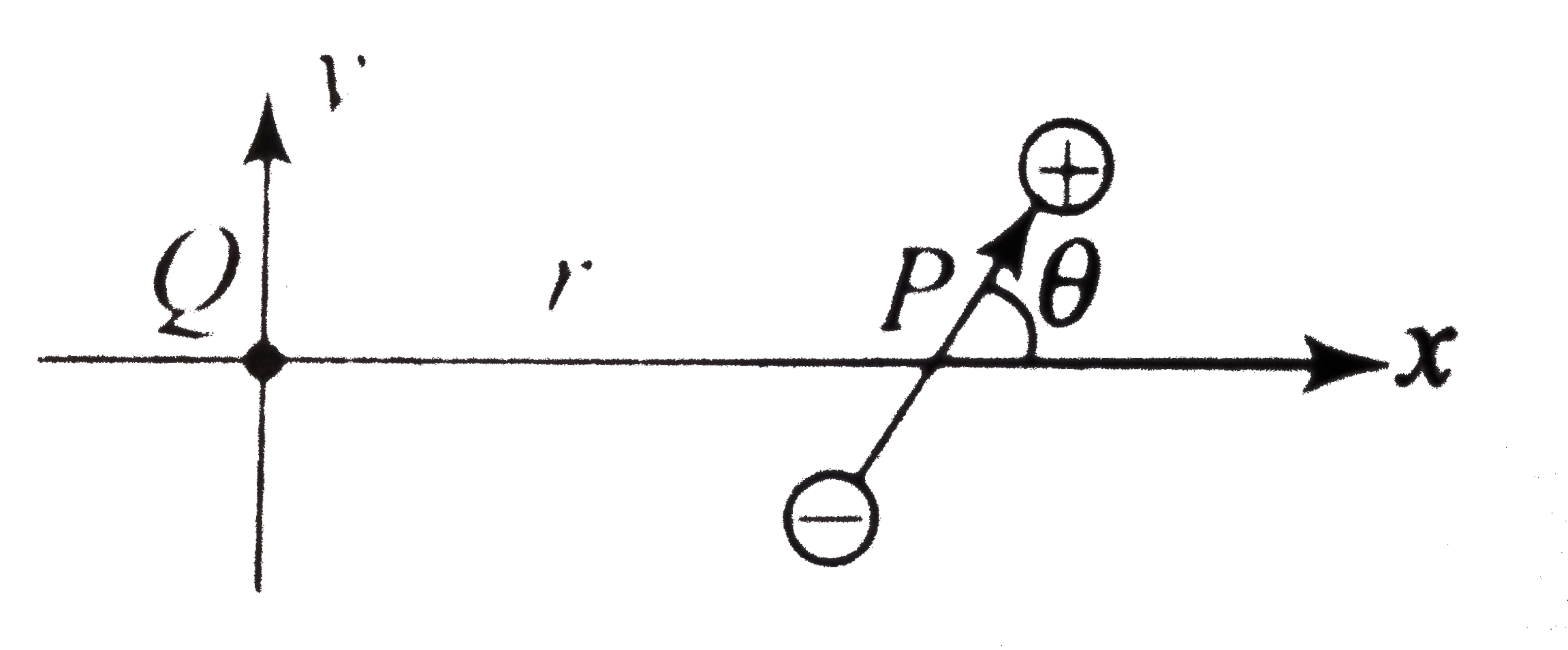We have two electric dipoles. Each dipole consists of two equal and opposite point charges at the ends of an insulating rod of length d. The dipoles sit along the x-axis a distance r aparts oriented as shown in fig. Their separation rgtgtd. The dipole on the left:

will feel a force to the left
will feel a force to the right
wiff feel a torque trying to make it rotate counterclockwise
will feel no torque
The correct Answer is:A, D
E1 and E2 are the electric field due to dipole (1) so E1>E2

Force on dipole (2) : qE1(left)+qE2(right)=qE1−E2)left. Diole (2) will not experience any torque, because lines of action of both forces are same.
Topper's Solved these Questions
- COULOMB LAW AND ELECTRIC FIELDBOOK - CENGAGE PHYSICSCHAPTER - COULOMB LAW AND ELECTRIC FIELDEXERCISE - Comprehension
25 Videos
- COULOMB LAW AND ELECTRIC FIELDBOOK - CENGAGE PHYSICSCHAPTER - COULOMB LAW AND ELECTRIC FIELDEXERCISE - Integer
8 Videos
- COULOMB LAW AND ELECTRIC FIELDBOOK - CENGAGE PHYSICSCHAPTER - COULOMB LAW AND ELECTRIC FIELDEXERCISE - Single Correct
47 Videos
- COMMUNICATION SYSTEMBOOK - CENGAGE PHYSICSCHAPTER - COMMUNICATION SYSTEMEXERCISE - QUESTION BANK
19 Videos
- Current ElectricityBOOK - CENGAGE PHYSICSCHAPTER - Current ElectricityEXERCISE - QUESTION BANK
40 Videos
Similar Questions
v37
View SolutionThree short electric dipoles, each of dipole moment P, are placed at the vertices of an equilateral triangle of side length L. Each dipole has its moment oriented parallel to the opposite side of the triangle as shown in the fig. Find the electric field and potential at the centroid of the triangle

View Solution
Knowledge Check
The formation of a dipole is due to two equal and dissimilar point charges placed at a
Ashort distanceBlong distanceCabove each otherDNone of theseWhat is the dipole moment of a dipole consisting two equal and opposite charges, each of 2 C seperated by 0.04 m:
A6×10−8 cmB1.5×102cmC8×10−6 cmD8×10−2 cmAn electric dipole consists of two opposite charges of magnitude 1μC separated by a distance of 2cm.The dipole is placed in an electric filled 10−5Vm−1.The maximum torque that the field exert on the dipole is
A2×10−4NmB2×10−3NmC4×10−3NmD10−3Nm
An electric dipole (AB) consisting of two particles of equal and opposite charge and same mass is released in an electric field. In the figure field lines are without considering effect of field of dipole.

The centre of mass of the dipole
View Solution[" An electric dipole consists of "],[" two charges of equal magnitude "],[" (q) and opposite sign separated "],[" by a distance 2a.The dipole is "],[" along the x axis and is centered "],[" at the origin.Calculate the "],[" absolute value of the electric "],[" potential at "(+x,0).]
View SolutionAn electric dipole (AB) consisting of two particles of equal and opposite charge and same mass is released in an electric field. In the figure field lines are without considering effect of field of dipole.

Angular acceleration of the dipole, immediately after it is released
View SolutionThe electric potential at a point on the axis of an electric dipole depends on the distance r of the point from the dipole as
View SolutionA point negative charge -Q is placed at a distance r from a dipole with dipole moment P in the xy plane as shown in fig. The x-component of force acting on the charge-Q is

View Solution
